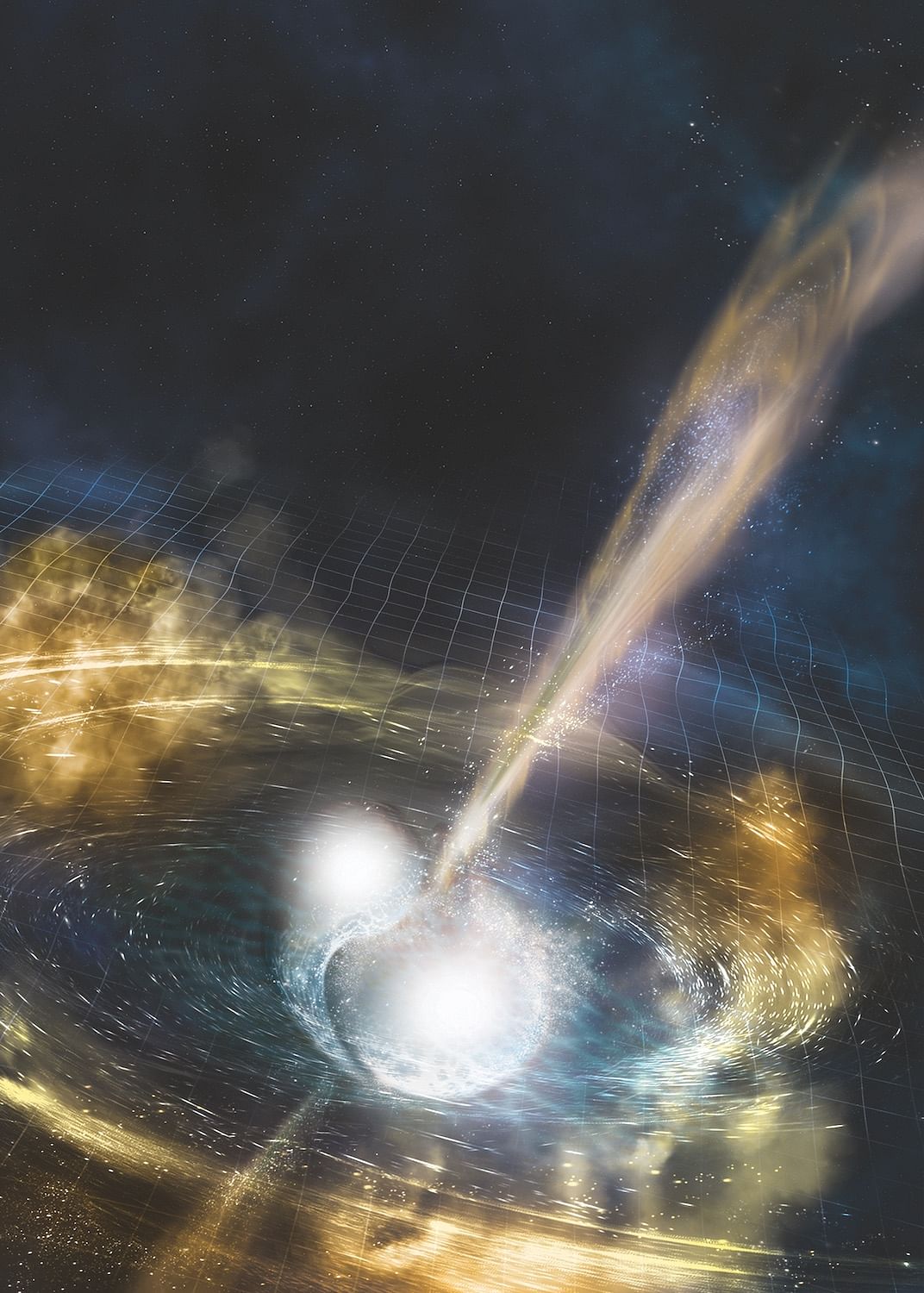
An international team of astronomers including several Indian scientists has detected a very unusual gravity wave, originating from a “mystery object” at a distance of 800 million light-years in a distant corner of the Universe.
In a serendipitous connection, the extraordinary gravity wave signals - generated by a compact object (a neutron star or a black hole) 2.6 times the mass of our Sun (2.6 solar masses), merging with a black hole of 23 solar masses – reached two highly sensitive and dedicated gravity wave telescopes on the earth on August 15th last year.
One of the two stellar bodies in the celestial collapse is a 23-solar-mass black hole. But it is the second mysterious object with a mass 9 times lighter than a black hole that aroused the curiosity of scientists around the world.
When the most massive stars die, they collapse under their own gravity and leave behind black holes. When stars that are a bit less massive die, they explode in supernovas and leave behind dense, dead remnants of stars called neutron stars.
For decades, astronomers have been puzzled by a gap that lies between neutron stars and black holes. The heaviest known neutron star is no more than 2.5 times the mass of our Sun or 2.5 solar masses, and the lightest known black hole is about 5 solar masses. The question remained: does anything lie in this so-called mass gap?
The measured mass of the second member of the unusual pair of dead stars puts it in the so-called “mass gap” between the heaviest known neutron stars and the lightest known black holes thereby opening up a new window for the astrophysicists to examine the elusive gravity waves whose detection escaped the scientists for decades.
Scientists from the Indian Institute of Technology, Gandhinagar, and Chennai Mathematical Institute are part of the team that made the discovery with the help of LIGO and VIRGO – two gravity wave detectors located in the USA and Europe respectively.
“Gravity Wave 190814 is an unexpected and really exciting discovery,” says Abhirup Ghosh, a post-doctoral researcher at the Max Planck Institute for Gravitational Physics (Albert Einstein Institute) in Potsdam.
“It is unique because of two outstanding features. Never before have we witnessed a gravitational-wave signal from a system in which the individual masses are this different: a black hole 23 times the mass of our Sun merging with an object just 2.6 times the mass of the Sun. But what adds to the mystery is that we are not sure about the nature of the lighter object. If it is indeed a black hole, it’s the lightest, and if it’s a neutron star it’s the most massive we have ever observed in a binary system of two compact objects.”
Several Indian institutes would be a part of the global team that would carry out subsequent analysis of the mysterious phenomenon.
“Mergers of a mixed nature - black holes and neutron stars - have been predicted for decades, but this compact object in the mass gap is a complete surprise,” said Northwestern University's Vicky Kalogera, a member of the team.
“Even though we can’t classify the object with conviction, we have seen either the heaviest known neutron star or the lightest known black hole. Either way, it breaks a record.”
A paper about the detection was published last week in the Astrophysical Journal Letters.
